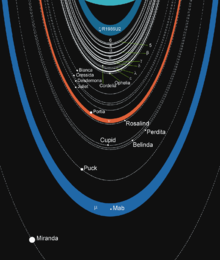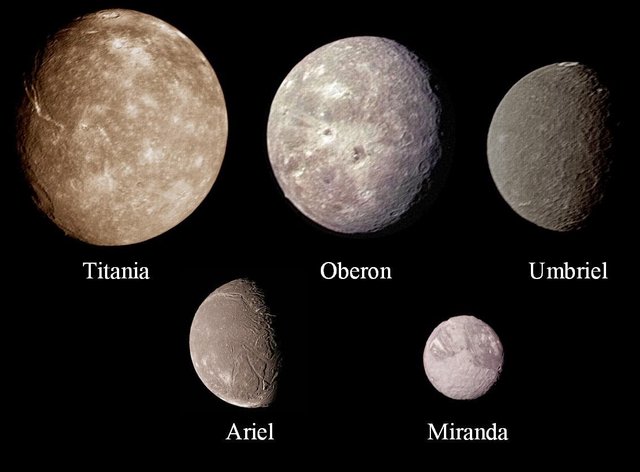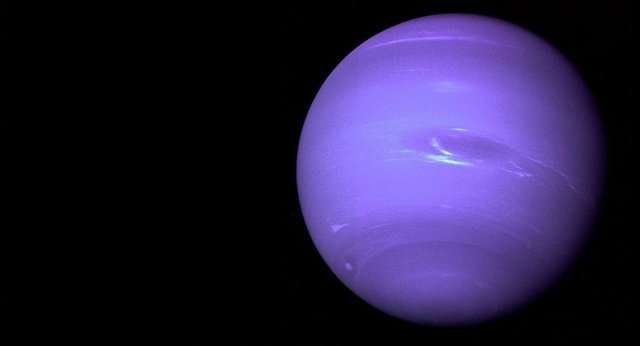Uranus - The Seventh Planet of the Solar System
Uranus
It is the seventh planet, the third largest and the fourth with the most mass of the Solar System. Discovered by Sir William Herschel on March 13, 1781, it is visible without a telescope. The enormous distance makes it shine little and move slowly. In addition, in the sky there are more than 5,000 stars brighter than him.

This planet, 51,118 km in diameter, is about 3,000 million kilometers from the Sun (20 times farther than Earth) and bears the name of the Greek god Uranus, who was the father of Crono (the Roman god of Saturn).
The Uranus atmosphere is formed by hydrogen, methane and other hydrocarbons. Methane absorbs red light, so it reflects blue and green tones.

Like the other giant planets, Uranus has a ring system, a magnetosphere and numerous satellites. The Uranus system has a unique configuration with respect to the other planets since its axis of rotation is very inclined, almost to its plane of revolution around the Sun. Therefore, its north and south poles are where most of the others planets have the equator.

In 1985, the rings were observed directly by the space probe Voyager 2 in an approach to its passage towards Neptune. Thanks to the images obtained by the astronomers of the University of Berkeley, with the optical infrared system of the Keck telescope, located in Hawaii, one of the rings has been found blue and the other red. Red is the usual color of all rings, but blue rings are a planetary rarity.
The rings of Uranus give the appearance of surrounding the planet as a target, and that the satellites revolve around them like the hands of a clock, although in 2007 and 2008, the rings appeared on the side.
Uranus satellites
Uranus has 27 known satellites and all have a definite name. The most important are: Titania, Oberon, Umbriel, Ariel and Miranda. These are the so-called "classic moons".
The names of the satellites of Uranus come from the characters of the works of William Shakespeare and Alexander Pope, especially of their female protagonists.

In 1986, the Voyager 2 probe discovered another 10 satellites, between 40 and 80 km in diameter, with the exception of Puck, which is 160 km long. These are (in alphabetical order): Belinda, Bianca, Cordelia, Crésida, Desdemona, Julieta, Ofelia, Porcia, Puck and Rosalinda.
Two of the new satellites are shepherd satellites of the inner and outer edges of the epsilon ring that is the outermost. It's about Cordelia and Ophelia. The other eight follow circular orbits between the rings and Miranda, the innermost of the satellites before the space age. Puck is the outermost of the 10 satellites discovered, the closest to Miranda, the largest and the first to be discovered, since the 1990s, the Hubble Space Telescope has allowed to increase the number of known satellites.

Epic journey
To begin with, the planet is almost 3 billion kilometers from the Sun, that is, 20 times farther than the Earth. Consequently, any spacecraft will take up to 15 years to get there.
Because sunlight is very weak at this distance, the mission will have to employ a nuclear power source, which is harder to build and manage.
There is also the question of how to communicate and retrieve data from a spacecraft that is so far away. Install a giant receiver on one side or build a large receiver on Earth? Or both?
Another major obstacle is the challenge of maintaining the mission, operations and engineering teams together during the decade between launch and arrival on the planet.
And all that before analyzing what instruments will be sent.

https://astrojem.com/teorias/urano.html